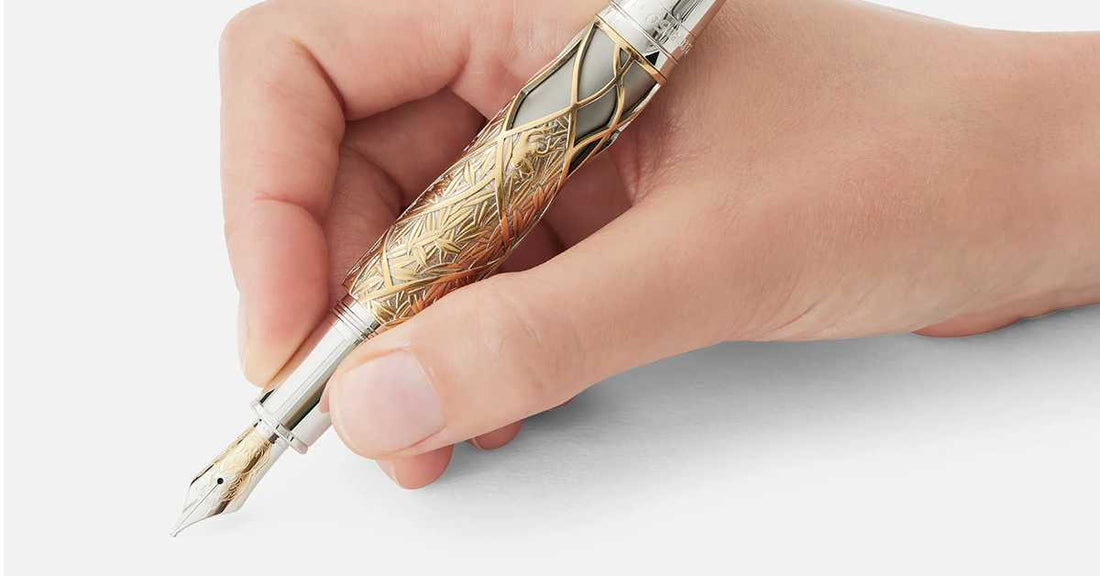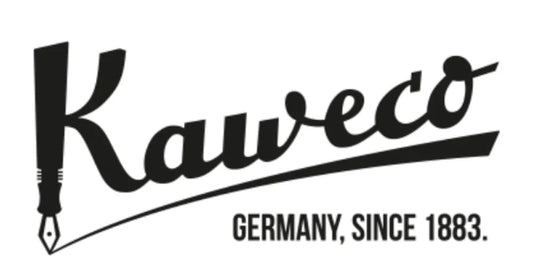Who Invented the Fountain Pen?
Christine Dromgoole
The fountain pen is more than a writing tool; it's a symbol of craftsmanship, personal expression, and history. We’ve spent over 60 years helping people experience the joy of putting ink on paper. Whether you're just starting with your first pen or you’ve been collecting for years, understanding how the fountain pen came to be deepens your connection to what you write.
Let’s explore who invented the fountain pen, how it evolved, and why it remains a popular writing instrument today.
Early Writing Tools Before the Fountain Pen
Before the modern fountain pen existed, people used quill pens and dip pens. Quills were made from bird feathers, typically goose or swan, and required frequent sharpening. Dip pens followed, using metal nibs that users dipped into inkwells. These tools offered more durability but still required frequent dipping and lacked a steady flow of ink.
Both designs provided a step forward in writing technology but had one major flaw—they could not hold ink inside the pen itself. That limitation led to the idea of a self-contained ink pen.
The First Fountain Pen Concepts
The Oldest Known Fountain Pen Reference
The first known reference to a fountain pen comes from 10th-century North Africa. A Fatimid caliph reportedly requested a pen that "held ink in a reservoir and did not stain the hand." While this pen has never been found, the request marks the beginning of a new idea: a pen that stored and delivered ink internally.
Daniel Schwenter’s Design (1636)
German inventor Daniel Schwenter described a pen made from two quills, one inside the other. He used one quill as a reservoir filled with ink, sealed with wax. Then, he fitted it into a second quill that acted as the writing tip. The idea was clear—contain ink inside the pen to avoid constant dipping.
This early design still relied on gravity and lacked true pressure control, but it laid the foundation for the modern fountain pen.
The First Fountain Pen Patent
The first fountain pen patent came in 1827, granted to Petrache Poenaru, a Romanian inventor and engineer. Poenaru’s design used a swan’s quill as the ink reservoir. He prevented ink from leaking using a sealed mechanism and filed the patent while studying in France.
This patent marked the true beginning of the fountain pen as a working product. Poenaru’s invention moved beyond theory, though. He offered a pen that could be refilled and used multiple times without frequent dipping.
Problems with Early Fountain Pens
Despite the innovation, early pens faced issues with ink flow, leakage, and clogging. Many of these pens lacked a system to regulate the pressure between the air inside the reservoir and the free flowing ink.
Without this balance, ink either refused to flow or spilled freely. These flaws prevented early models from becoming widely accepted.
The materials also posed a challenge. Nibs made from cheap steel corroded over time, while early reservoirs often leaked. Only with better materials and improved designs would the fountain pen become truly functional and reliable.
Lewis Waterman and the Modern Fountain Pen
In 1884, American inventor Lewis Edson Waterman patented a design that changed everything. His fountain pen featured a feed system that regulated the flow of ink using air channels. This prevented leaks and created a steady writing experience.
Waterman’s innovation is widely credited as the foundation of the modern fountain pen.
Waterman pens used metal nibs initially. They later introduced iridium tipped gold nibs, which improved durability and created a smooth writing experience. Gold resisted corrosion, and the iridium tip prevented the nib from wearing down with use.
With Waterman’s reliable design, the fountain pen became a popular writing instrument in offices, schools, and homes.
John Jacob Parker and Self-Filling Pens
In 1894, John Jacob Parker improved the fountain pen by adding a rubber sac inside the barrel. The sac stored ink and could be squeezed to fill or release ink into the feed system. This created the first widely used self-filling fountain pen.
This design reduced the mess of refilling pens and made it easier for users to carry and use their pens daily. Many manufacturers adopted this idea, launching a new era of pen designs.
Evolution of Fountain Pen Nibs
Early pens used steel nibs, which were easy to produce but prone to corrosion and bending. As fountain pens became more refined, makers shifted to iridium tipped gold nibs.
Gold provided flexibility and resistance to rust. Iridium tips made the pen nib last longer and improved how it moved across paper. These upgrades helped the fountain pen compete with newer tools, such as ballpoint pens, in the mid-20th century.
The Rise and Fall—And Rise Again—of Fountain Pens
In the 1940s and 1950s, ballpoint pens began to dominate. They were cheaper, disposable, and required no maintenance. As a result, fountain pen sales declined.
But many people missed the writing quality and personal connection that fountain pens offered. Enthusiasts kept the tradition alive, and companies like Parker, Waterman, and Montblanc continued to produce high-end pens.
Why the Fountain Pen Still Matters
Fountain pens are no longer essential in daily life. However, they remain a widely popular choice for those who enjoy writing with intention.
They offer a smooth writing experience with less pressure on the hand. Moreover, the wide range of pen nib styles lets people customize how their writing looks and feels. Whether you write with a fine, medium, or broad nib—or something more exotic—your pen reflects your style.
Ink options are just as personal. Users can pick from hundreds of ink colors and formulas, many of which are not available in ink cartridges for other pens.
We see this love for writing every day at our pen store. People of all ages stop in to test pens, explore ink options, and ask about historical models. That is just part of why our family business has thrived for four generations.
Key Milestones in Fountain Pen History
-
1636 - Daniel Schwenter: First reservoir pen concept using two quills
-
1827 - Petrache Poenaru: First fountain pen patent using a quill reservoir
-
1884 - Lewis Waterman: Feed system that regulated ink flow
-
1894 - John Jacob Parker: Rubber sac self-filling fountain pen
-
1900s–1940s - Mass production of metal nib pens: Durable steel and gold nibs became standard
-
1950s–Present - Fountain pen revival: Collector interest and daily use for writing lovers
Materials That Changed the Game
The Role of Cheap Steel and Better Alternatives
Mass production relied on cheap steel, which made pens more affordable. But this steel often rusted or bent. Makers responded with better materials, such as stainless steel and gold alloys, often tipped with iridium to extend the pen's life.
The pen nib became a focus of both form and function. Its shape, material, and flexibility all contribute to how the flow of ink reaches the page.
So, Who Invented the Fountain Pen?
We have no single answer but a chain of innovators.
-
Daniel Schwenter imagined the idea.
-
Petrache Poenaru secured the first fountain pen patent.
-
Lewis Waterman made it reliable.
-
John Jacob Parker made it easier to refill.
Each played a role in creating the fountain pen we know today.
If you’re holding a fountain pen right now, you’re not just using a writing tool—you’re carrying history. Dromgoole’s is proud to help people continue this tradition, one page at a time.
Would you like to explore vintage pens or test the latest models of fountain pens? Stop by our Houston store or browse our inventory in our online shop. Whether you're after smooth steel nibs, iridium tipped gold nibs, or want to try a new ink cartridge, we’ll help you find what fits your hand—and your handwriting.



